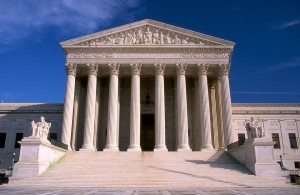By Taylor Anderson
On February 1, 2016, the Fourth Circuit issued its published opinion regarding the civil case Warfaa v. Ali. Farhan Warfaa (“Warfaa”), the plaintiff, appealed the district court’s summary dismissal of his Alien Tort Statute (“ATS”) claims after the district court found that Warfaa’s ATS claims did not sufficiently “touch and concern” the United States so as to establish jurisdiction in the United States. Additionally, Yusuf Ali (“Ali”) appeals the district court’s decision to allow Warfaa’s Torture Victim Protection Act of 1991 (“TVPA”) claims to proceed. The district court allowed the TVPA claims to proceed because Ali was not entitled to immunity as a foreign official. The Fourth Circuit affirmed the judgment of the district court.
Warfaa Alleges Several Violations of International Law
Throughout the 1980s, the Somali government targeted members of certain opposition “clans” through killings, torture, and property destruction. This government regime was titled the “Barre” regime. Warfaa’s clan, the Isaaq, was one of the targeted clans. Ali supported the Barre regime and commanded the Fifth Battalion of the Somali National Army stationed in Gebiley, the area where Warfaa lived. One morning in December 1987, two armed soldiers from the Fifth Battalion appeared at Warfaa’s hut and captured him. Warfaa was later detained and placed in a small, windowless cell with ten other prisoners.
Warfaa alleged he was subjected to many acts of violence during his detention at the direction of Ali. These acts included, but were not limited to, beatings with the butt of a gun, being tied up in a painful position, being kicked, being stripped naked, and being beat into unconsciousness. Throughout his capture, Ali abused and tortured Warfaa at least nine times.
In March 1988, Ali’s base was attacked. After ordering his soldiers to defend the base, Ali shot Warfaa in the wrist and leg, causing him to fall unconscious. Ali thought he had killed Warfaa and ordered his guards to bury the body; however, Warfaa regained consciousness while in the guards’ possession and convinced the guards to accept a bribe. Warfaa was released, and he still resides in Somalia today.
The Barre regime collapsed in 1991, but Ali had departed the country in advance of the fall. He came to the United States, and the United States began deportation proceedings soon thereafter. Ali voluntarily left the country in 1994 before the conclusion of the deportation proceedings. Ali returned to the United States in December 1996 and now resides in Alexandria, Virginia.
Warfaa filed suit against Ali in the United States District Court for the Eastern District of Virginia in 2004. For most of its duration, the case was stayed. On April 25, 2014, the district court lifted the stay and ordered Warfaa to file an amended complaint. Warfaa’s amended complaint contained six counts, and all six counts alleged torts purportedly committed in violation of international law, with jurisdiction arising under the ATS. Additionally, the first two counts were alleged to violate the TVPA, which provides a jurisdictional basis separate from the ATS. The district court dismissed the ATS claims because “such claims, generally speaking, must be based on violations occurring on American soil.” The district court also rejected Ali’s motion to dismiss the TVPA claims, concluding that Ali could not claim “official acts” immunity because his alleged acts violated jus cogens norms. Both parties timely appealed.
The ATS Does Not Grant Original Jurisdiction
The Fourth Circuit started its ATS analysis by pointing out that the ATS grants district courts “original jurisdiction” over “any civil action by an alien for a tort . . . committed in violation of the law of nations or a treaty of the United States.” The Fourth Circuit then narrowed its analysis of Warfaa’s claims based on the Supreme Court’s decision in Kiobel v. Royal Dutch Petroleum Co. In Kiobel, the Supreme held that an ATS claim may not reach conduct occurring in the territory of a foreign sovereign. Additionally, the Kiobel presumption provides that when a statute gives no clear indication of an extraterritorial application, as the ATS did, it has none. Finally, the Fourth Circuit recognized that the Supreme Court emphasized that the ATS can create jurisdiction for such claims only where they “touch and concern” United States territory “with sufficient force to displace the presumption against extraterritorial application.”
The Fourth Circuit held that Warfaa’s ATS claims fell squarely within the ambit of Kiobel’s broad presumption against extraterritorial application of ATS because all of the relevant conduct in Warfaa’s case took place outside of the United States, in Somalia. Nothing in Warfaa’s case involved U.S. citizens, the U.S. government, U.S. entities, or events in the United States. The Fourth Circuit stated that the only purported “touch” in this case is the happenstance of Ali’s after-acquired resident in the United States long after the alleged events of abuse; however, this “touch” is not enough to overcome the Kiobel presumption. For this reason, the Fourth Circuit affirmed the district court’s decision to dismiss Warfaa’s ATS claims.
Ali Is Not Immune from the TVPA Claims
The district court allowed Warfaa’s TVPA claims to go forward, finding that Ali lacked foreign official immunity for jus cogens violations under the Fourth Circuit’s holding in Yousuf v. Samantar. On appeal, Ali’s only challenge was that Samantar was wrongly decided, and jus cogens violations deserve immunity.
The Fourth Circuit held that it was not in a position to overrule Samantar, as Ali wished. Instead, the Fourth Circuit stated that one panel’s decision is binding, not only upon the district court, but also upon another panel of this court—unless and until it is reconsidered en banc. For this reason, the Fourth Circuit did not consider the Samantar holding’s validity and held that the district court properly concluded Samantar forecloses Ali’s claim to foreign official immunity.
Judgment Affirmed
Because the district court correctly held that Warfaa’s ATS claims lacked a sufficient nexus with the United States to establish jurisdiction over those claims and Ali was not to receive foreign official immunity, the Fourth Circuit affirmed the decisions of the district court.
One judge wrote an opinion concurring in part and dissenting in part. This judge dissented on the issue of the ATS claims and believed that the Fourth Circuit should have reversed the district court’s decision in relation to them because Ali had extensive contacts with the United States which should have subjected him to the jurisdiction of the United States.


